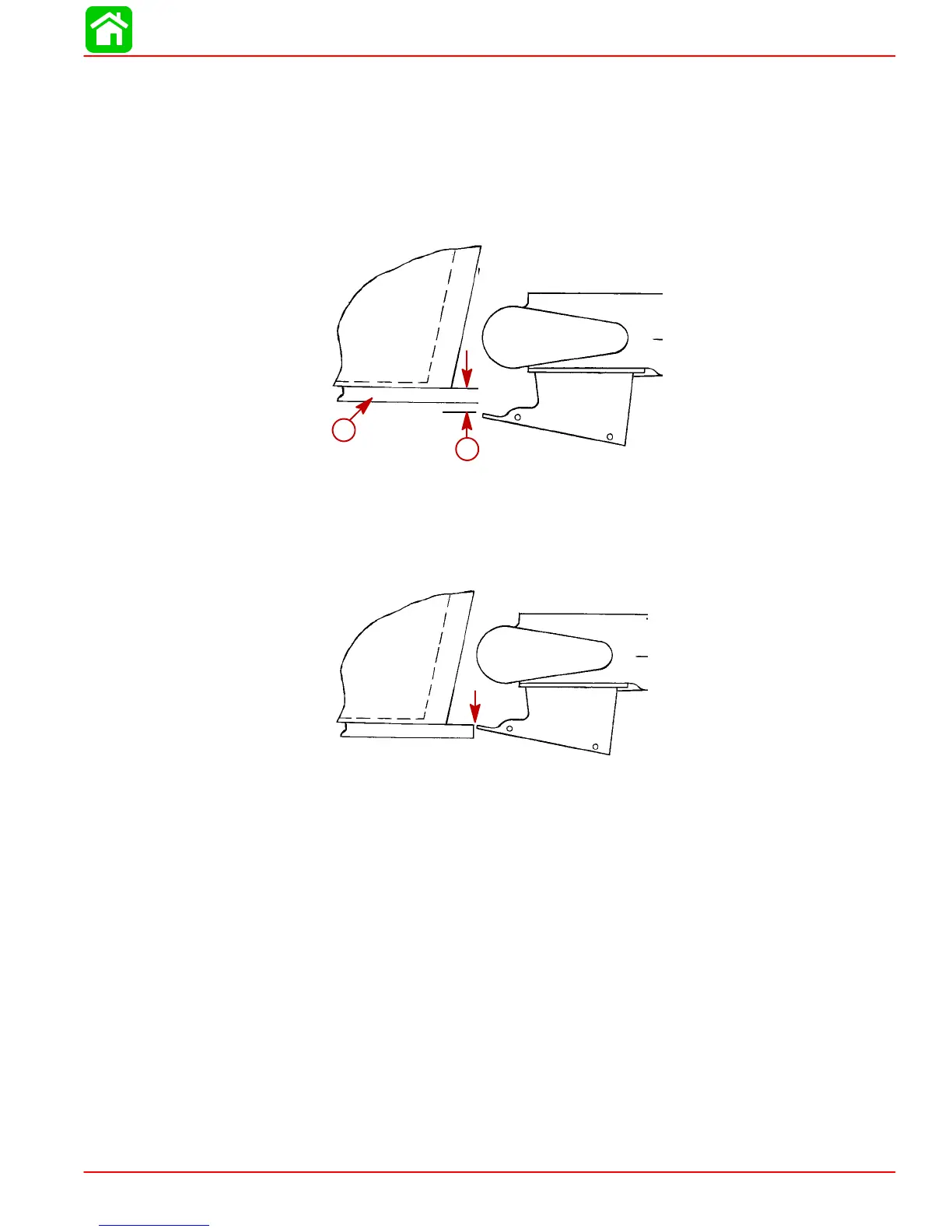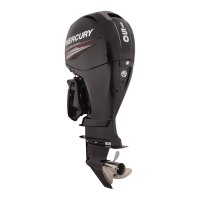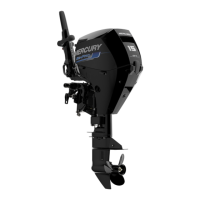JET DRIVE
90-826883R2 JUNE 1998 Page 6B-13
SETTING OUTBOARD MOUNTING HEIGHT ON BOATS WITH FLAT BOTTOM HULLS
1. Place(center)theoutboardontheboattransomsothatthetransombracketsarerest-
ing on top of the transom. Temporarily fasten the outboard to the transom using two
C-clamps.
2. Position the outboard in a vertical position.
3. Placeastraightedgealongthebottomoftheboatasshownandmeasurethedistance
between the bottom of the boat and top front edge of the water intake housing.
a
b
a - Straight Edge
b - Top Front Edge of Water Intake Housing
4. RaisetheoutboarduponthetransomthedistancemeasuredinStep3.Useastraight
edge and recheck the mounting height. The top edge of the water intake housing
should be in line with the bottom of the boat as shown.
5. Fasten outboard to the transom at this height.
Water Testing
Checking for Cavitation
Making the initial outboard height setting should be close to the optimum setting for the
outboard. However because of the hull design of some boats, obstructions or imperfec-
tions in the hull ahead of the water intake may require this setting to change in order to
prevent cavitation at running speeds.
Whenoperatingtheboat,theoutboarddriveshaftshouldbeverticalwhenplaningortilted
toward the boat in order to provide a scooping angle on the water intake. Tilting the out-
boardoutbeyondaverticalpositionreducesthescoopangleandcancauseimpellerslip-
page and cavitation. If the angle of the boat transom does not allow the drive shaft to be
positioned vertically, a Wedge kit should be installed behind the transom brackets to in-
crease the tilt-in angle.
NOTE: Slight cavitation in sharp turns and rough water is acceptable but excessive ca-
vitation is harmful to the outboard and should be avoided.

